#ecodesigners
Explore tagged Tumblr posts
Text

Rebel bikers on city council plannification table.
#bike#demo#velorution#criticallmass#bikeagainstthesystem#graphisme#graphicdesign#affiche#poster#rennes#bzh#criticalmass#ecodesign#mestravauxecolos
3 notes
·
View notes
Text

Il cartolaio del bosco lo puoi fare da solo o in compagnia Lo puoi fare per esplorare o per creare. Lo puoi scegliere per imparare o per imparare ad insegnare. Lo puoi fare per autoprodurre tutto ciò che compri in cartoleria. Lo puoi fare per scoprire che il tuo bosco sta anche dentro un vaso. La grande novità 2024-2025 è che nasce il cartolaio experience un momento lungo quanto vuoi dedicato al piacere di fare cose cartolaie in compagnia di una tisana, di un buon aperitivo con i prodotti Slow Food e circondata da tanti colori, libri e piante e buoni consigli.
2 notes
·
View notes
Photo


♻️ How Earth Day Campaign Aesthetics are Inspiring a Sustainable Future
#earth#earth month#earth day#earth day every day#earth day marketing#aesthetic#design#ecodesign#green marketing#climate change#environmental marketing#sustainability#sustainability marketing#climate
2 notes
·
View notes
Text
Unione Industriale di Torino. Orizzonte Legno 2024: il futuro sostenibile del settore legno-arredo in Piemonte. Ottimismo dagli Stati Generali: innovazione, sostenibilità e crescita per il 2025
Torino, 3 dicembre 2024 – Il settore legno-arredo piemontese si conferma un pilastro dell’economia regionale, come emerso durante la quarta edizione di Orizzonte Legno, organizzata dall’Unione Industriale di Torino.
Un comparto solido e resiliente Torino, 3 dicembre 2024 – Il settore legno-arredo piemontese si conferma un pilastro dell’economia regionale, come emerso durante la quarta edizione di Orizzonte Legno, organizzata dall’Unione Industriale di Torino. Con oltre 3.500 imprese attive e un fatturato annuo superiore ai 4 miliardi di euro, il Piemonte si posiziona come leader nazionale nel comparto,…
#Alessandria today#Angelo Luigi Marchetti#Binderholtz#competenze industriali#Conlegno#Corrado Cremonini#Crescita economica#deforestazione#ecodesign#Economia circolare#economia regionale#EUDR#Federazione Filiera Legno#formazione risorse umane#futuro legno-arredo#Google News#Green Economy#Hannes Hauser#Impatto ambientale#imprese legno Piemonte#industria legno#Innovazione sostenibile#investimenti industriali#italianewsmedia.com#legname#legno-arredo#Marco Gay#Matteo Mazzoni#normativa europea#Orizzonte Legno 2024
0 notes
Text



A few weeks ago I came across this project on Dezeen 'H2ERǴ ring made with metals "mined" by plants’ (last slide) it was so exiting to see something I had researched and formed a speculative projects about, manifest into a actual product! - https://www.dezeen.com/2024/08/30/phytomined-h2erg-ring-metals-plants-design/ . These plants are called 'Hyperaccumulators' - plants which can be used as tools to collect materials such as metal from the ground. As explored in James Bridle's book 'ways of being' he sees these plants being used in Greece - ‘The plot (in Greece he is at) produces between 6 and 13 tonnes of biomass per hectare, depending on the crop, and each of those hectares produces between 80 and 150KG of nickel. By comparison, a tonne of mined nickel ore contains about 1 or 2% nickel, or 10 to 20KG.’ - Such a hyperaccumulator is also seaweed - which is a current talking point in the 'New Scientist' podcast published on the 31st of May 2024. . My project 'Eco Fenders for Hyperobjects' looks at this topic from a different angle. Of using these plants as barriers for future concern - . This project germinated from a profound awareness of the multifaceted crisis gripping the UK- ranging from biodiversity loss and energy concerns to mounting waste and a perceptible apathy towards enhancing the well-being of its populace. I embarked on a journey to craft a natural method of crisis aversion. This dynamic map seeks to unravel ways in which our small island can address and rectify the human-induced crises through ecological solutions. Examining locations of landfills, nuclear reactors and soil fertility. Functioning as a speculative endeavor, the project introduces a visionary plant symbolic of climate change and other land-related challenges we currently confront.
#greendesign#anthropocene#visualmedia#visualcommunication#regenerativedesign#ethicaldesign#symbiosis#hyperaccumulators#naturelover#graphicdesign#speculativedesign#discursivedesign#designconcept#designprocess#ecodesign#ecologicaldesign#sunflowers#landscaperestoration#conservation
1 note
·
View note
Text
Elevate interiors with eco-friendly, stylish choices today.
1 note
·
View note
Text
Sustainable Style: Eco-Friendly Furniture Choices for Your Home
As concerns for the environment grow, making conscious choices for your home is more important than ever. Sustainable furniture prioritizes eco-friendly materials and ethical production, creating a stylish space that minimizes your environmental footprint.
Materials that Matter
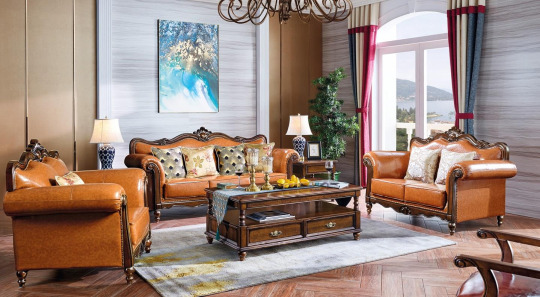
Reclaimed Wood: Repurposed wood from old barns, buildings, or boats gets a new lease on life.
Bamboo: A fast-growing and renewable resource, offering a durable and stylish alternative.
Recycled Metals: Aluminum and steel find new uses in sleek and modern furniture pieces.
Natural Fibers: Organic cotton, linen, and wool textiles create cozy, breathable upholstery and accents.
Beyond the Materials
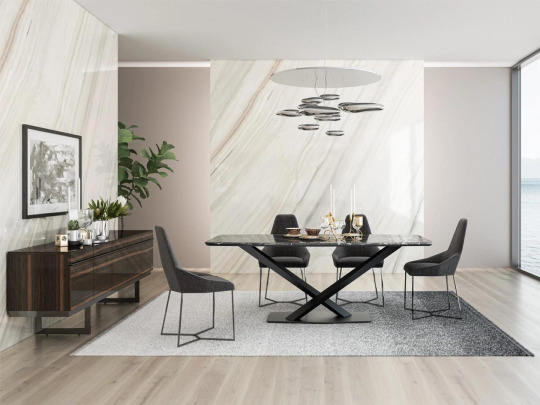
Certifications: Look for labels like FSC (Forest Stewardship Council) for responsibly sourced wood, or GOTS (Global Organic Textile Standard) for organic fabrics.
Local Craftsmanship: Support artisans in your community and reduce the carbon footprint of shipping.
Invest in Quality: Well-made pieces last longer, reducing waste and the need for frequent replacements.
Eco-Chic Inspiration

Minimalist Haven: Embrace clean lines, natural wood tones, and organic textures for a serene space.
Boho-Chic Retreat: Lush plants, woven accents, and handcrafted pieces create a global-inspired oasis.
Modern-Rustic Fusion: Combine reclaimed wood with sleek metal accents for an industrial-meets-natural aesthetic.
Discover Sustainable Style with xlfurniture.co.uk
xlfurniture.co.uk is committed to offering a curated selection of eco-friendly furniture to help you create a beautiful and sustainable home.
Visit us at xlfurniture.co.uk – where style meets sustainability!
1 note
·
View note
Text
Sustainable Style: Eco-Friendly Furniture Choices for Your Home
As concerns for the environment grow, making conscious choices for your home is more important than ever. Sustainable furniture prioritizes eco-friendly materials and ethical production, creating a stylish space that minimizes your environmental footprint.
Materials that Matter

Reclaimed Wood: Repurposed wood from old barns, buildings, or boats gets a new lease on life.
Bamboo: A fast-growing and renewable resource, offering a durable and stylish alternative.
Recycled Metals: Aluminum and steel find new uses in sleek and modern furniture pieces.
Natural Fibers: Organic cotton, linen, and wool textiles create cozy, breathable upholstery and accents.
Beyond the Materials
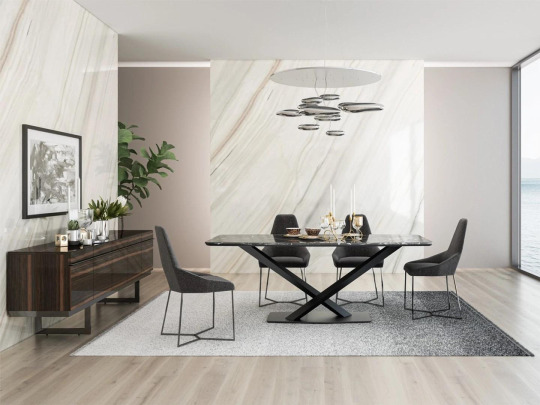
Certifications: Look for labels like FSC (Forest Stewardship Council) for responsibly sourced wood, or GOTS (Global Organic Textile Standard) for organic fabrics.
Local Craftsmanship: Support artisans in your community and reduce the carbon footprint of shipping.
Invest in Quality: Well-made pieces last longer, reducing waste and the need for frequent replacements.
Eco-Chic Inspiration

Minimalist Haven: Embrace clean lines, natural wood tones, and organic textures for a serene space.
Boho-Chic Retreat: Lush plants, woven accents, and handcrafted pieces create a global-inspired oasis.
Modern-Rustic Fusion: Combine reclaimed wood with sleek metal accents for an industrial-meets-natural aesthetic.
Discover Sustainable Style with home24.ae
Home24.ae is committed to offering a curated selection of eco-friendly furniture to help you create a beautiful and sustainable home.
Visit us at home24.ae – where style meets sustainability!
1 note
·
View note
Link
L'OCCITANE en Provence, a leading force in sustainable beauty and a pioneer in premium hospitality amenities, has unveiled its innovative eco-designed Aromachology Collection. This exciting launch reaffirms the brand's commitment to environmental responsibility while offering hotels a luxurious and eco-conscious guest experience. A Legacy of Sustainability and Wellness For over four decades, L'OCCITANE en Provence has championed sustainable practices within the beauty industry. Their dedication extends to the hospitality sector, where they have long provided premium hotels with unique amenities and gift sets. Each product draws inspiration from the breathtaking natural beauty of Provence and is formulated with meticulous care using natural ingredients. The Eco-Designed Aromachology Collection: Luxury Meets Sustainability The new Aromachology Collection by L'OCCITANE en Provence seamlessly blends luxury with environmental responsibility. Here's a closer look at the collection's offerings: Invigorating Shower Gel: This fresh, aromatic shower gel features a blend of invigorating essential oils like mint, pine, and rosemary. Its revitalizing properties leave the skin feeling stimulated and energized. Nourishing Shampoo: This silicone-free shampoo utilizes five natural origin essential oils, including lavender, geranium, ylang-ylang, angelica, and sweet orange. It helps repair, strengthen, and protect hair, leaving it soft, shiny, and manageable. Detangling Conditioner: Formulated with the same nourishing blend of essential oils and sweet almond oil, this conditioner helps detangle and restore hair health. Rich and Creamy Body Lotion: This luxurious body lotion features a blend of lavender, tea tree, and geranium essential oils, enriched with grapeseed oil. It deeply moisturizes and nourishes the skin. Pioneering Sustainable Packaging L'OCCITANE en Provence takes the fight against plastic waste seriously. The Aromachology Collection's packaging is completely eco-designed, featuring: Refillable Dispensers: The collection utilizes sleek and refillable 300ml dispensers, minimizing plastic waste and promoting sustainability. Eco-Refills: Large, one-liter eco-refills offer a more environmentally friendly way to replenish the dispensers. Recycled Plastic Bottles: The entire collection, including both dispensers and refills, is manufactured from 100% recycled plastic bottles, demonstrating L'OCCITANE en Provence's commitment to a circular economy. A Commitment to a Sustainable Hospitality Industry L'OCCITANE en Provence is a leader in advocating for a more sustainable hospitality sector. By offering eco-designed amenities like the Aromachology Collection, the brand aims to: Reduce Waste: Refillable dispensers and eco-refills significantly reduce single-use plastic waste in hotel rooms. Enhance Guest Experience: L'OCCITANE en Provence products are known for their luxurious quality and delightful aromas, contributing to a more enjoyable guest experience. Promote Positive Change: L'OCCITANE en Provence encourages hotels to embrace sustainable practices, setting a positive example for the industry. Recognition for Sustainability Efforts L'OCCITANE en Provence's dedication to sustainability has not gone unnoticed. Here are some recent accolades: PCD Innovation Awards 2024: The brand's new 500ml refill won the Personal Care category at this prestigious packaging industry award. Ellen MacArthur Foundation: L'OCCITANE en Provence was recognized as a leading brand committed to combating plastic pollution in a progress report by the Ellen MacArthur Foundation's New Plastics Economy Global Commitment. L'OCCITANE en Provence: A Sustainable Future for Hospitality The launch of the eco-designed Aromachology Collection underscores L'OCCITANE en Provence's unwavering commitment to sustainability. By offering premium, eco-friendly amenities, the brand empowers hotels to create a luxurious guest experience while minimizing their environmental footprint. This innovative approach is paving the way for a more sustainable future within the hospitality industry. FAQs: Q: What makes L’OCCITANE’s Aromachology Collection eco-friendly? A: L’OCCITANE’s Aromachology Collection features sustainable packaging, including refillable dispensers and eco-refills made from 100% recycled plastic bottles, reducing environmental impact. Q: What sets L’OCCITANE’s products apart in the hospitality sector? A: L’OCCITANE en Provence’s products are renowned for their premium quality, crafted from organic and natural ingredients inspired by the beauty of Provence, offering guests a luxurious and sustainable experience. Q: How does L’OCCITANE contribute to environmental initiatives? A: L’OCCITANE’s commitment to sustainability extends beyond product design to initiatives like the New Plastics Economy Global Commitment, promoting a shift towards a more environmentally friendly planet.
#AromachologyCollection#ecoconsciousness.#ecodesigned#ecofriendlypackaging#environmentalstewardship#guestexperience#hospitalitysector#LOCCITANEenProvence#L’OCCITANE#organicingredients#premiumamenities#recycledplastic#sustainability
0 notes
Text

Rebel Biker blue
#rebel biker#velorution#critical mass#masse critique#bike#biker#rebel#illustration#graphic design#blue#bretagne#bikeagainstthesystem#criticalmass#mestravauxecolos#ecodesign#rideagainstthesystem
2 notes
·
View notes
Text
Get ready to be amazed! Watch the mesmerizing process of peeling a mold containing 70% recycled black foam and 30% Nike Grind – recycled crumb made from shoe rubber! This 1/2” peel will soon become 'ortho mats' (anti-fatigue mats). The vibrant colors from the shoes create a stunning visual, and these mats offer exceptional comfort when standing! ♻️👟 #Nike #Sustainability #Recycling
Find out more about sustainable solutions at US Rubber: https://www.usrubber.com/ 🌿✨
#Recycling#Sustainability#EcoFriendly#Nike#AntiFatigueMats#RubberMats#USRubber#SustainableLiving#GreenLiving#EnvironmentalAwareness#SustainableMaterials#RecycledMaterials#EcoProducts#EcoInnovation#EcoDesign#FootwearRecycling#Reuse#ReduceWaste
1 note
·
View note
Text
It’s an open secret in fashion. Unsold inventory goes to the incinerator; excess handbags are slashed so they can’t be resold; perfectly usable products are sent to the landfill to avoid discounts and flash sales. The European Union wants to put an end to these unsustainable practices. On Monday, [December 4, 2023], it banned the destruction of unsold textiles and footwear.
“It is time to end the model of ‘take, make, dispose’ that is so harmful to our planet, our health and our economy,” MEP Alessandra Moretti said in a statement. “Banning the destruction of unsold textiles and footwear will contribute to a shift in the way fast fashion manufacturers produce their goods.”
This comes as part of a broader push to tighten sustainable fashion legislation, with new policies around ecodesign, greenwashing and textile waste phasing in over the next few years. The ban on destroying unsold goods will be among the longer lead times: large businesses have two years to comply, and SMEs have been granted up to six years. It’s not yet clear on whether the ban applies to companies headquartered in the EU, or any that operate there, as well as how this ban might impact regions outside of Europe.
For many, this is a welcome decision that indirectly tackles the controversial topics of overproduction and degrowth. Policymakers may not be directly telling brands to produce less, or placing limits on how many units they can make each year, but they are penalising those overproducing, which is a step in the right direction, says Eco-Age sustainability consultant Philippa Grogan. “This has been a dirty secret of the fashion industry for so long. The ban won’t end overproduction on its own, but hopefully it will compel brands to be better organised, more responsible and less greedy.”
Clarifications to come
There are some kinks to iron out, says Scott Lipinski, CEO of Fashion Council Germany and the European Fashion Alliance (EFA). The EFA is calling on the EU to clarify what it means by both “unsold goods” and “destruction”. Unsold goods, to the EFA, mean they are fit for consumption or sale (excluding counterfeits, samples or prototypes)...
The question of what happens to these unsold goods if they are not destroyed is yet to be answered. “Will they be shipped around the world? Will they be reused as deadstock or shredded and downcycled? Will outlet stores have an abundance of stock to sell?” asks Grogan.
Large companies will also have to disclose how many unsold consumer products they discard each year and why, a rule the EU is hoping will curb overproduction and destruction...
Could this shift supply chains?
For Dio Kurazawa, founder of sustainable fashion consultancy The Bear Scouts, this is an opportunity for brands to increase supply chain agility and wean themselves off the wholesale model so many rely on. “This is the time to get behind innovations like pre-order and on-demand manufacturing,” he says. “It’s a chance for brands to play with AI to understand the future of forecasting. Technology can help brands be more intentional with what they make, so they have less unsold goods in the first place.”
Grogan is equally optimistic about what this could mean for sustainable fashion in general. “It’s great to see that this is more ambitious than the EU’s original proposal and that it specifically calls out textiles. It demonstrates a willingness from policymakers to create a more robust system,” she says. “Banning the destruction of unsold goods might make brands rethink their production models and possibly better forecast their collections.”
One of the outstanding questions is over enforcement. Time and again, brands have used the lack of supply chain transparency in fashion as an excuse for bad behaviour. Part of the challenge with the EU’s new ban will be proving that brands are destroying unsold goods, not to mention how they’re doing it and to what extent, says Kurazawa. “Someone obviously knows what is happening and where, but will the EU?”"
-via British Vogue, December 7, 2023
#fashion#slow fashion#style#european union#eu#eu news#eu politics#sustainability#upcycle#reuse#reduce reuse recycle#ecofriendly#fashion brands#fashion trends#waste#sustainable fashion#sustainable living#eco friendly#good news#hope
10K notes
·
View notes
Text
Illuminate Your Outdoor Space with CBK Firefly Solar Lights
Outdoor lighting has evolved from being a mere functional necessity to an integral component of creating a captivating ambiance. With the advancement in technology, solar-powered lighting has gained significant traction for its eco-friendliness and cost-effectiveness. Among the various options available in the market, CBK Firefly Outdoor Solar Lights have emerged as a leading choice for consumers seeking efficient and sustainable outdoor lighting solutions.

Understanding Solar-Powered Lighting Systems
The concept of solar power revolves around harnessing the energy of the sun to generate electricity, making it a renewable and sustainable source of power. Solar-powered lighting systems utilize photovoltaic cells to convert sunlight into electricity, which is then stored in batteries for later use. This efficient mechanism not only reduces electricity costs but also minimizes the carbon footprint, making it an environmentally friendly lighting option.
Key Features of CBK Firefly Outdoor Solar Lights
CBK Firefly Outdoor Solar Lights boast several unique features that set them apart from their counterparts. From their sleek and durable design to the incorporation of advanced technological components, these lights offer a blend of aesthetics and functionality. Equipped with high-quality materials and cutting-edge solar panels, CBK Firefly Lights ensure optimal performance and longevity, even in challenging outdoor environments.
Comparative Analysis with Competing Brands
In the competitive landscape of outdoor lighting, CBK Firefly stands out for its exceptional value proposition. While some competitors may offer similar features, CBK Firefly distinguishes itself through its superior build quality, long-lasting battery life, and competitive pricing. Its robust construction and advanced technology make it a reliable choice for consumers looking for efficient and durable outdoor lighting solutions.
Efficiency and Eco-Friendliness of CBK Firefly Lights
One of the significant advantages of CBK Firefly Lights lies in their exceptional energy efficiency, attributed to their solar-powered functionality. By harnessing solar energy, these lights not only minimize electricity consumption but also contribute to reducing the overall carbon footprint. This eco-friendly approach aligns with the growing global emphasis on sustainable living and environmentally responsible practices.
Installation and Maintenance Guidelines
Installing CBK Firefly Lights is a straightforward process that requires minimal technical expertise. A step-by-step guide provided by the manufacturer ensures a hassle-free setup, allowing users to seamlessly integrate the lights into their outdoor spaces. Additionally, regular maintenance, such as cleaning the solar panels and checking the batteries, ensures the longevity and optimal performance of the lights, even in diverse weather conditions.
Application of CBK Firefly Lights in Different Outdoor Settings
The versatility of CBK Firefly Lights enables their application in various outdoor settings, ranging from residential gardens and pathways to commercial landscapes and public areas. These lights can also be creatively used for special occasions, adding a touch of elegance and charm to any event. Their adaptability and aesthetic appeal make them an ideal choice for both practical and decorative lighting purposes.
User Experience and Customer Reviews
Feedback from users and customers underscores the satisfaction and reliability offered by CBK Firefly Lights. Positive experiences and testimonials highlight the product's performance, durability, and user-friendly features. Any common concerns or issues raised by customers are addressed promptly, reflecting the brand's commitment to ensuring a positive customer experience and building lasting trust.
Technical Specifications and Variants Available
CBK Firefly Lights come with detailed technical specifications, offering transparency and clarity regarding their performance capabilities. The availability of different variants and customization options caters to the diverse needs and preferences of consumers. These lights are designed to be compatible with various outdoor environments, ensuring seamless integration and optimal functionality in different settings.
Innovation and Future Prospects in Solar Lighting
The future of solar lighting holds promising prospects, with ongoing advancements in technology and increasing emphasis on sustainable practices. CBK Firefly anticipates these developments and aims to stay at the forefront of innovation, consistently enhancing its product offerings to align with emerging trends and consumer demands. By embracing innovation, CBK #Firefly Lights continues to evolve as a pioneering solution in the realm of solar-powered outdoor lighting.
Ensuring Durability and Longevity of CBK Firefly Lights
CBK Firefly Lights are crafted using high-quality materials, ensuring their durability and resilience to withstand various weather conditions. Their weather-resistant properties make them suitable for long-term outdoor use, providing reliable lighting solutions throughout different seasons. Additionally, the warranty and customer support provided by CBK contribute to the confidence and trust customers place in the brand.
Integration of Smart Technology in CBK Firefly Lights
CBK Firefly Lights incorporate smart features that enable users to control and manage their outdoor lighting efficiently. The integration of smart technology enhances the overall user experience, allowing for convenient customization and automation of lighting preferences. This integration also facilitates seamless compatibility with smart home systems, contributing to a comprehensive and interconnected home automation experience.
Addressing Common Myths about Solar-Powered Lights
Misconceptions regarding the efficiency and reliability of solar-powered lights often deter consumers from exploring this sustainable lighting option. CBK Firefly addresses these misconceptions by providing in-depth insights into the functionality and performance of their solar-powered lights, dispelling any doubts and ensuring a comprehensive understanding of their capabilities. Education and awareness play a crucial role in encouraging the adoption of solar-powered lighting solutions.
Cost-Effectiveness and Long-Term Savings of CBK Firefly Lights
The cost benefits of choosing CBK Firefly Lights become apparent when considering their long-term efficiency and savings. By harnessing solar energy, these lights significantly reduce electricity bills, offering an economical alternative to traditional lighting solutions. The investment in CBK Firefly Lights translates into long-term savings, making them a cost-effective and sustainable choice for consumers seeking durable and energy-efficient outdoor lighting options.
Influence of CBK Firefly Lights on Sustainable Development Goals
CBK Firefly Lights align with global sustainable development goals by promoting energy efficiency and environmental conservation. Their contribution to reducing carbon emissions and conserving natural resources reflects a commitment to sustainable living and responsible energy consumption. By choosing CBK Firefly Lights, consumers actively participate in advancing sustainable development and contributing to a greener future.
Tips for Enhancing Ambiance and Aesthetics with CBK Firefly Lights
CBK Firefly Lights offer ample opportunities to create captivating outdoor ambiances and enhance the aesthetics of any space. By strategically placing the lights and leveraging their customizable features, users can create visually appealing landscapes and accentuate the architectural elements of their outdoor environments. The flexibility and creative potential of CBK Firefly Lights enable users to personalize their outdoor spaces according to their preferences and style.
Expert Opinions and Industry Recognition of CBK Firefly Lights
Industry experts recognize the superior quality and performance of CBK Firefly Lights, acknowledging their contribution to the advancement of sustainable lighting solutions. Awards and accolades received by the product further validate its excellence and reinforce its position as a leading choice in the outdoor lighting market. Expert opinions and industry recognition affirm the trust and confidence placed in CBK Firefly as a reliable and innovative brand.
Customer Support and Community Engagement by CBK
CBK Firefly demonstrates a strong commitment to customer satisfaction through its comprehensive customer support services. The brand's emphasis on engaging with the community and supporting various social initiatives highlights its dedication to fostering positive relationships and making a meaningful impact. By prioritizing customer support and community engagement, CBK Firefly establishes itself as a brand that values meaningful connections and enriches the lives of its customers and communities.
Enhancing Security with CBK Firefly Lights in Outdoor Spaces
Outdoor lighting plays a critical role in enhancing security measures, contributing to creating safer and more secure environments. CBK Firefly Lights effectively improve visibility and deter potential threats, making outdoor spaces more secure and reassuring for users. Testimonials from users affirm the positive impact of CBK Firefly Lights on enhancing security, providing peace of mind and a sense of safety within their outdoor spaces.
Conclusion: Emphasizing the Value Proposition of CBK Firefly Lights
In conclusion, CBK Firefly Outdoor Solar Lights exemplify a harmonious blend of innovation, sustainability, and aesthetic appeal. Their efficient performance, eco-friendliness, and durability position them as an ideal choice for consumers seeking reliable and long-lasting outdoor lighting solutions. By prioritizing customer satisfaction, technological advancement, and sustainable practices, CBK Firefly Lights not only illuminate outdoor spaces but also contribute to a brighter and greener future for all.
#SolarLights#OutdoorDecor#SustainableLiving#GreenEnergy#GardenLighting#EcoFriendly#FireflyLights#SolarTechnology#EnergyEfficiency#OutdoorLifestyle#LightUpYourSpace#EcoDesign#IlluminateTheNight#GreenLiving#SolarPower
0 notes
Link
The insights in sustainability design in the Philippines may seem daunting at times, but innovation is what drives us to find new solutions. READ: https://fulgararchitects.com/blog/modern-architecture-in-the-philippines-the-key-drivers-in-sustainability/ #sustainable #eco #ecology #philippines #greendesign #tropical #sustainablebeauty #ecoconscious #architectureanddesign #ecodesign #ecolifestyle #sustainableluxury #architecturedose #homestyling #myhomevibe #zerowaste #architectureproject #modernarchitect #environmental #homedesigns #homebeautiful #sustainablity #house #architect #sustainability #architecture #architecturedesign
#sustainable#eco#ecology#philippines#greendesign#tropical#sustainablebeauty#ecoconscious#architectureanddesign#ecodesign#ecolifestyle#sustainableluxury#architecturedose#homestyling#myhomevibe#zerowaste#architectureproject#modernarchitect#environmental#homedesigns#homebeautiful#sustainablity#house#architect#sustainability#architecture#architecturedesign
0 notes
Text
✨🌿 Magia w żarówce!
Zaskocz swoich gości niezwykłą dekoracją - żarówką LED z mini ogrodem w środku.
Kliknij i zobacz: https://sklepinternetowypl.com/dom/dekoracyjna-ozdobna-zarowka-ledowa-z-ogrodem/-1345
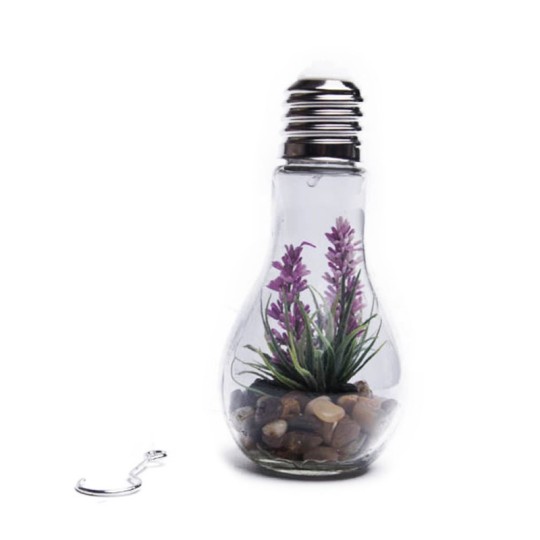


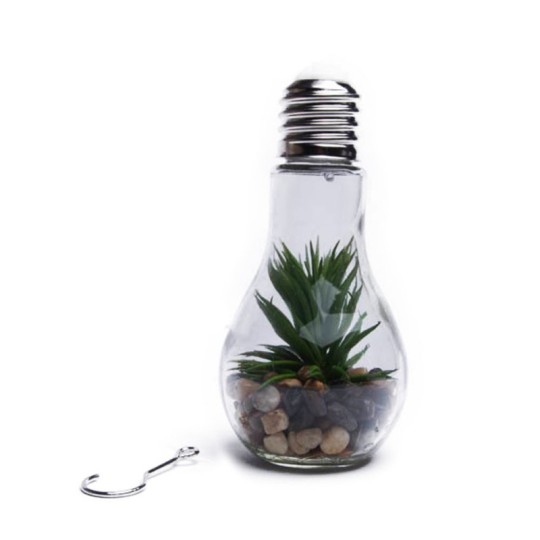
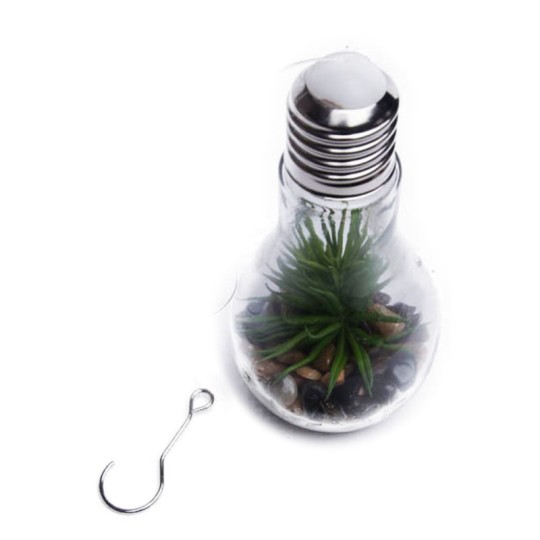
0 notes
